29 January, 2003
January 29, 2003
Yeast-ka-teers
Over seventy years ago, yeast, fungi and bacteria were found in the Dry Valleys of Antarctica. The yeast research team, fondly known as "Yeast-ka-teers" or "Yeastie Boys" or "Fun-guys", is working to find answers to some fundamental questions involving the relationship of these organisms to the food web in the Dry Valleys. The research team consists of Dr. Laurie Connell from the University of Maine at Orono, Dr. Russell (Rusty) Rodriguez from the University of Washington and the USGS, Dr. Regina Redman also from the University of Washington, and Scott Craig from US Fish and Wildlife Service.
Yeast are single-celled fungi. Fungi lack chlorophyll but are capable of fermenting carbohydrates. They provide a mechanism for uptake and transfer of phosphorus, an important nutrient in the food web of the Dry Valleys. They are widely distributed in the soils, even in areas of high alkalinity and salinity, and are capable of surviving repeated freeze-thaw cycles, as well as low moisture. They are also flexible in what they can eat.
One of the fundamental questions being addressed through the research is what is the abundance and distribution of yeast in the Dry Valleys? The team is analyzing the physical and chemical make-up of the soil and extracting DNA from it. They are studying the distribution of yeast and bacteria by sampling along grids at high, middle and low elevations. They are also working to develop a relationship between the abundance of the organisms with the presence or absence of water.
As this research season draws to a close, the team is already looking to next year when another important question can be addressed. They want to know whether these communities of organisms are dormant, or "making a living," or reproducing. This year, they have found thousands of filamentous yeast, so they believe they are thriving.
In the extreme eco-system of Yellowstone's geo-thermal soils, Regina and Rusty have found a grass with a symbiotic relationship to a fungal endophyte. An endophyte is a plant growing within another plant. Symbiotic means they live together in a sometimes mutually beneficial relationship. In this parcticular case, they found that the plant and the endophyte together could live and thrive in the extreme heat, but apart they did not survive. They have also found a similar symbiotic relationship between a grass living in the high salinity sand of the San Juan Islands in Washington and a fungus. They wonder if the mosses of the Dry Valleys have a fungus that is helping them adapt to the extremes of Antarctica's environment.
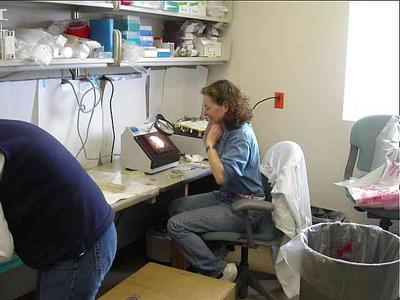
1. Laurie counting yeast.
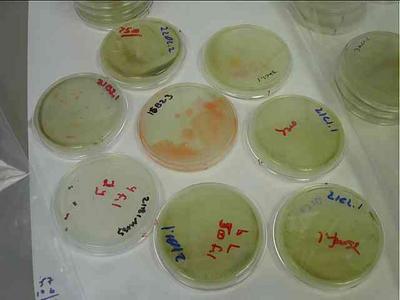
2. Lots of colorful yeast. The pink blob in the middle eventually grew out of the sides of its petri dish!

3. Hundreds of yeast in their petri dishes in the incubator.

4. Scott working in the lab with samples brought in from the field.
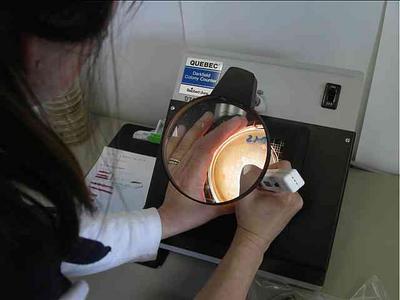
5. Regina counting yeast growth by holding the petri dish with the culture under a magnifying lens over a light box. The light box has a grid on it to help estimate the numbers growing in the different sections of the dish.
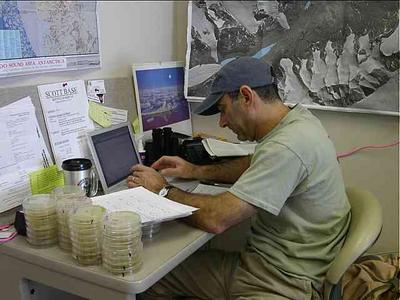
6. Rusty updating the data in his computer.

7. Yeast growing in petri dishes.
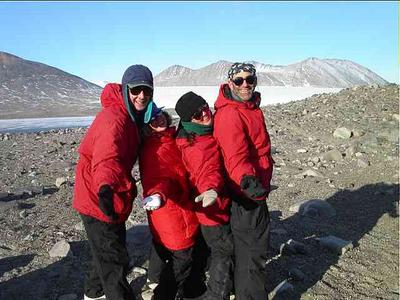
8. Yeastie Boys...and girls visit us at F6. You can see another picture of their team with the Kennedy flag on my journal dated 1/3/03.
Contact the TEA in the field at
.
If you cannot connect through your browser, copy the
TEA's e-mail address in the "To:" line of
your favorite e-mail package.
|
